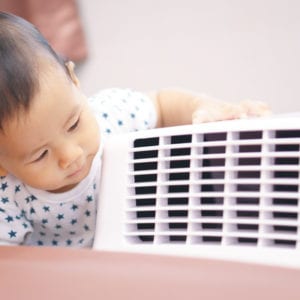Century-Old Cleaning Hacks to Try This Spring
We could all use a little extra inspiration to take on the spring cleaning that lies ahead. Instead of buying expensive new cleaning gadgets, why not try something different? Our grandparents always give tried-and-true advice, and these spring cleaning hacks are no exception!
Wake Up Early and Plan Ahead
You can accomplish a lot if you get up just a little earlier each day to tackle your spring cleaning chores. We’re often tired by the end of the day, so it is a good idea to make a list and work through your tasks first thing in the morning.
Make Your Own Cleaning Products
Grandma didn’t have all the fancy cleaning supplies we use today. As it turns out, many items in your kitchen will clean your home as effectively and will be kinder to the environment than commercial products. Invest in a bottle of white vinegar and you can tackle a ton of cleaning projects around your home.
Windows are one of the biggest jobs on the spring cleaning list. You can make a perfect window-cleaner by mixing 1 cup of vinegar, 2 cups of water, ¼ cup of rubbing alcohol, and 1 tablespoon of cornstarch. You can add several drops of orange or lemon essential oil for a nice scent.
But don’t stop there! You can use vinegar to clean your showerhead by pouring some into a small plastic bag and wrapping it around the fixture. Leave it overnight and wipe away any residue in the morning. You can also mix 1/2 cup vinegar with 1 cup of water and a generous squeeze of lemon juice for a countertop grease-and-grime cleaner.
Banish Dust
If your home is due for a duct cleaning, you may find yourself dealing with more than the usual amount of dust this season. Here are a few cleaning hacks to help you manage:
- Always dust surfaces with a damp cloth. Add a few drops of essential oil such as orange, lemon, or lavender for a nice scent. Begin at the top and work your way down when cleaning.
- Use an old pillowcase to clean dust from ceiling fan blades. Cover the blade with the pillowcase and you won’t get dirt and dust everywhere!
- You can apply a small amount of car or floor wax to your air vents to help prevent dust from building up on the vent itself. However, that won’t do anything for the dust inside your vents — only a professional duct cleaning can effectively tackle that job.
Polish to a Shine
Extra virgin olive oil will do a great job of cleaning your leather furniture. If your pets have left tiny scratches, you can fill them with a little matching colour shoe polish. Mix some with a little lemon oil, and you’ve got yourself a furniture polish, too!
Maybe you were lucky to have inherited some silverware. Plain white toothpaste can polish that silver to a shine. White toothpaste will also clean the jewellery to a sparkle!
Get Rid of Bad Odours
Got musty odours in your closet? Hang a bundle of white chalk to chase away musty odours and dehumidify your closet. Got stinky shoes? Put half a fresh onion in a small bowl of water and place it near your shoes overnight. Believe it or not, the onion will absorb bad odours without leaving an onion scent.
Clean Toilets Overnight
Cleaning toilets isn’t anyone’s favorite task. Here’s an effortless way to clean them overnight while you are asleep! Sprinkle Borax in the toilet bowl, and then spray white vinegar over it. In the morning, just flush for a clean toilet.
Borax has incredible whitening and cleaning properties, and was used widely in the 19th century. You can also add some to your laundry for a boost and decrease the detergent you use.
Deodorize Carpets
Back in the day, it was common to lug rugs and carpets outside to give them a good whack with a broom to knock off the dust. But there is an easier way! You can remove nasty smells from your rugs and carpets by sprinkling baking soda over them for at least 15 minutes before vacuuming.
Welcome the Sunlight
Before dryers, all laundry was hung out on the line to dry. There is nothing finer than the smell of bed sheets that have dried on the clothes line. Take advantage of this natural dryer and save on your hydro bills!
Above all, if you’re not bothered by pollen, make sure to open your windows wide on those first warm sunny spring days and let all that fresh air in to your home. Fresh air is essential for ridding your home of bacteria, mildew and bad odours.
Image: geographica





